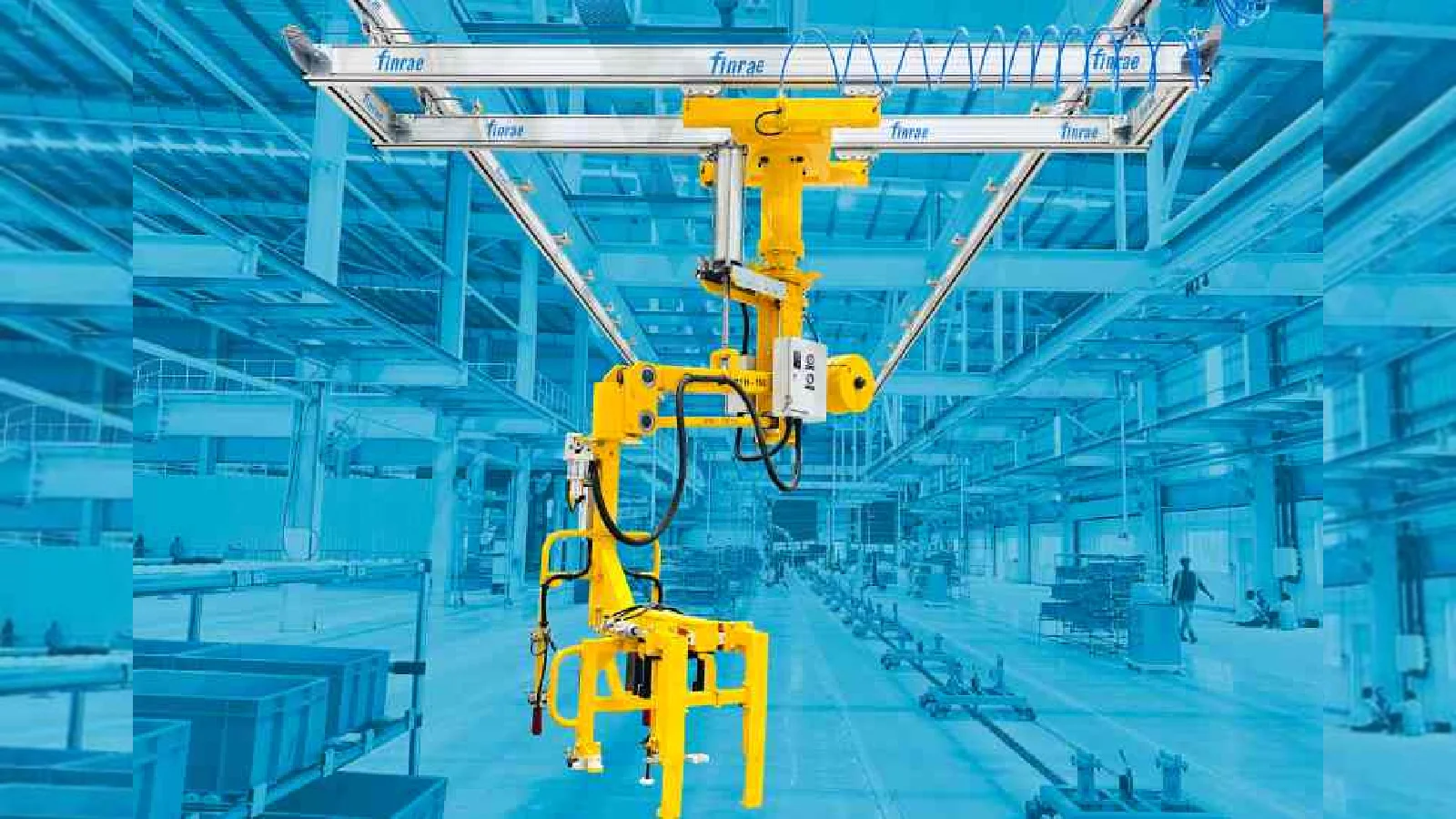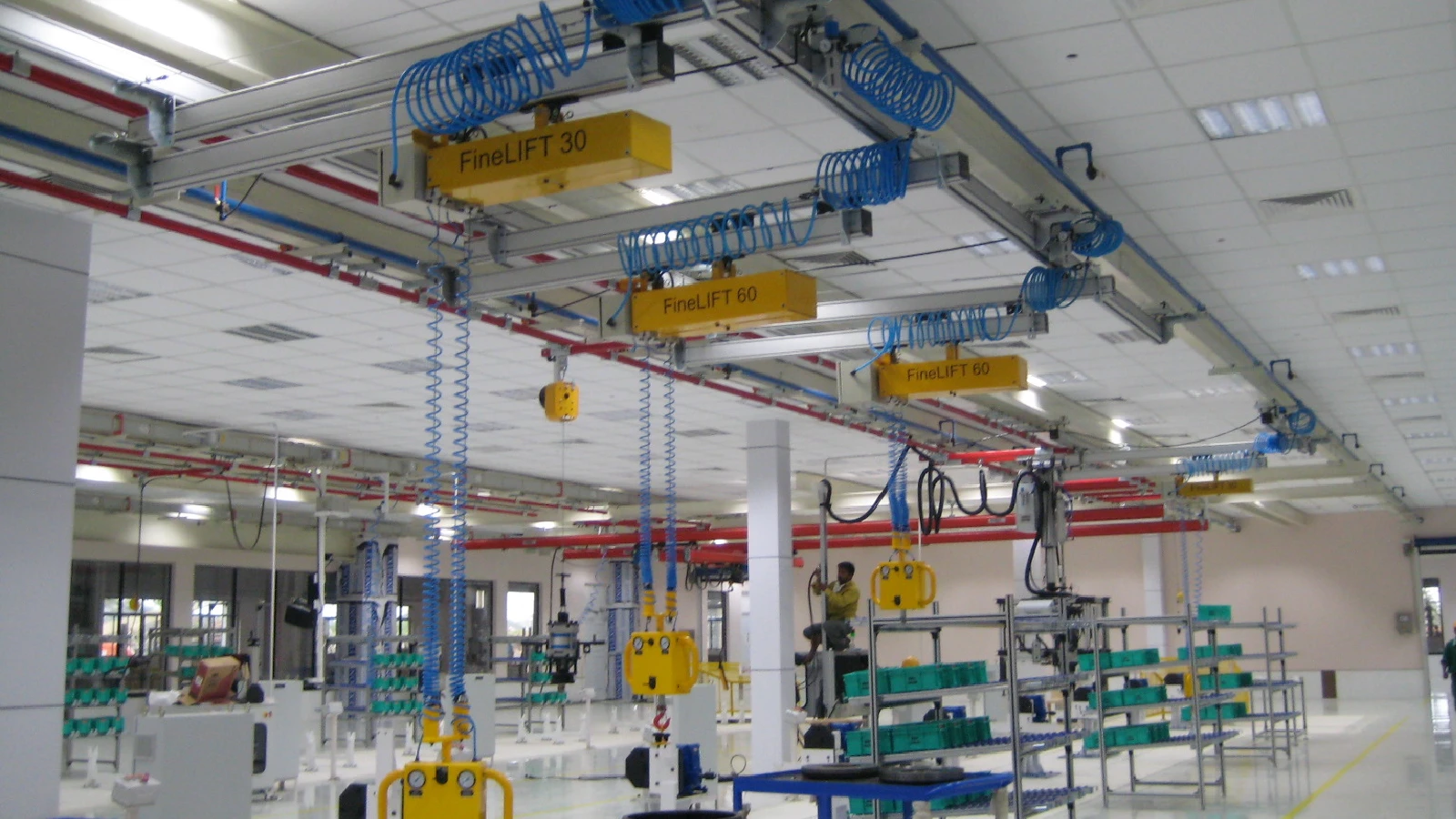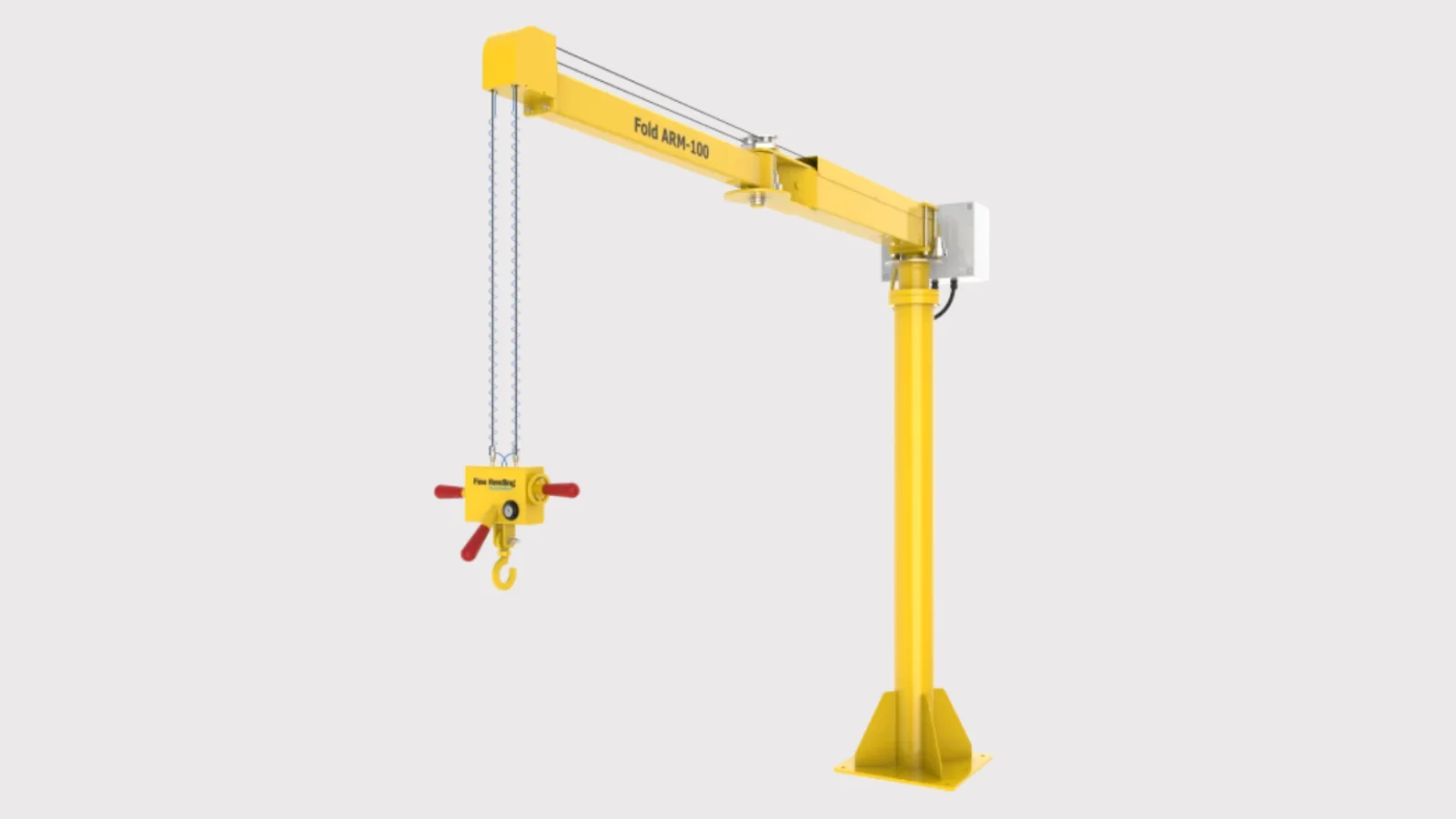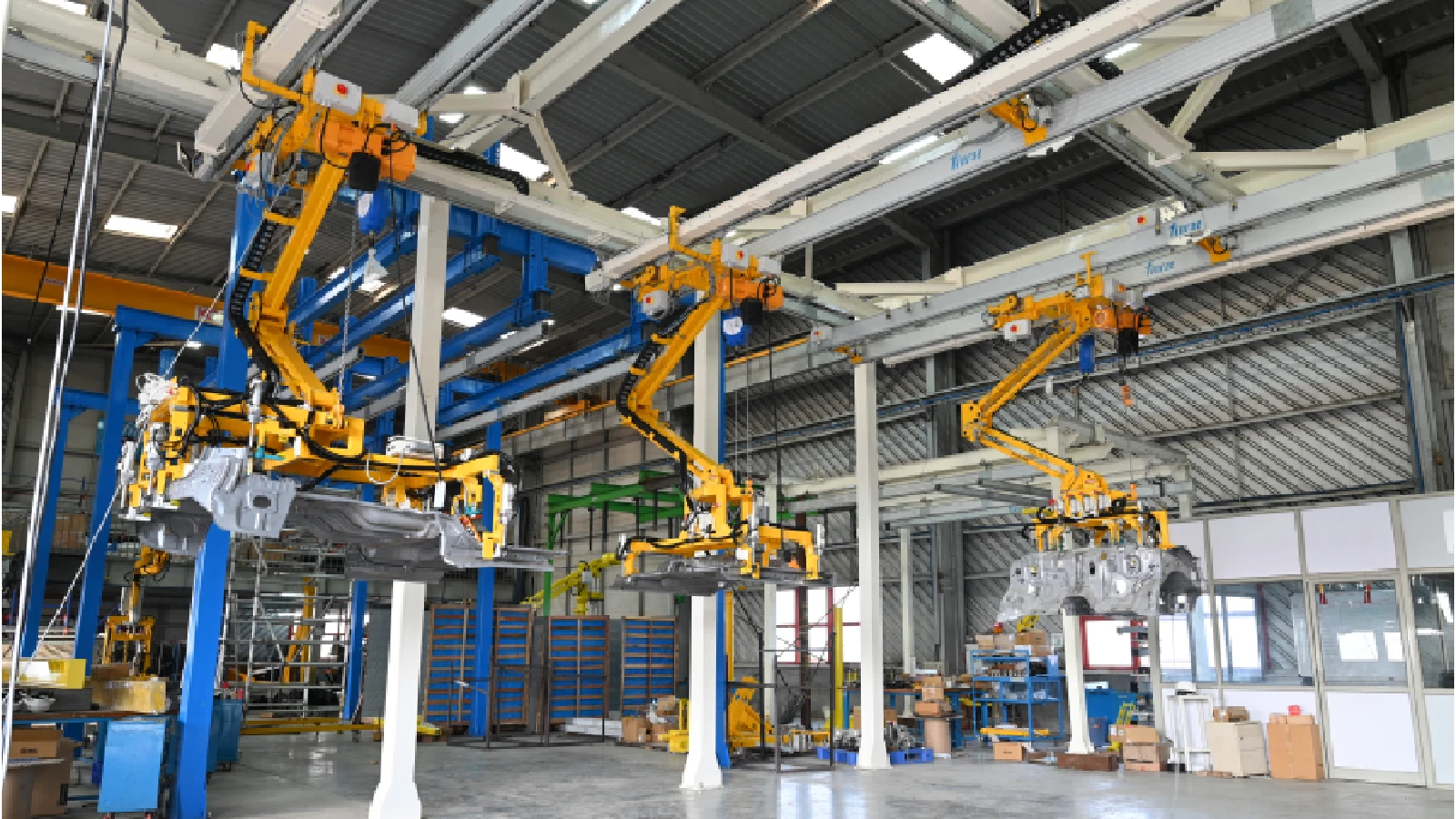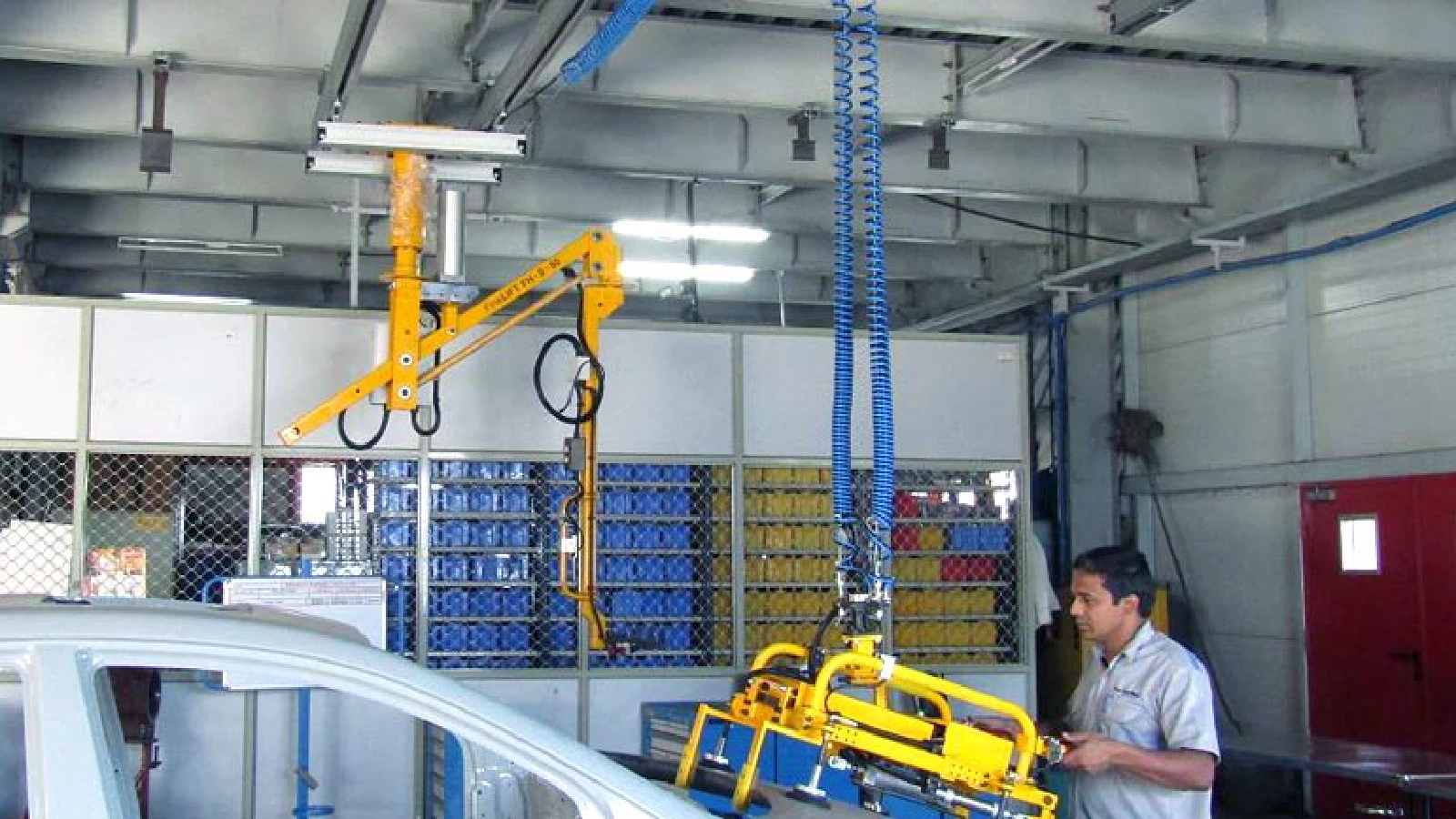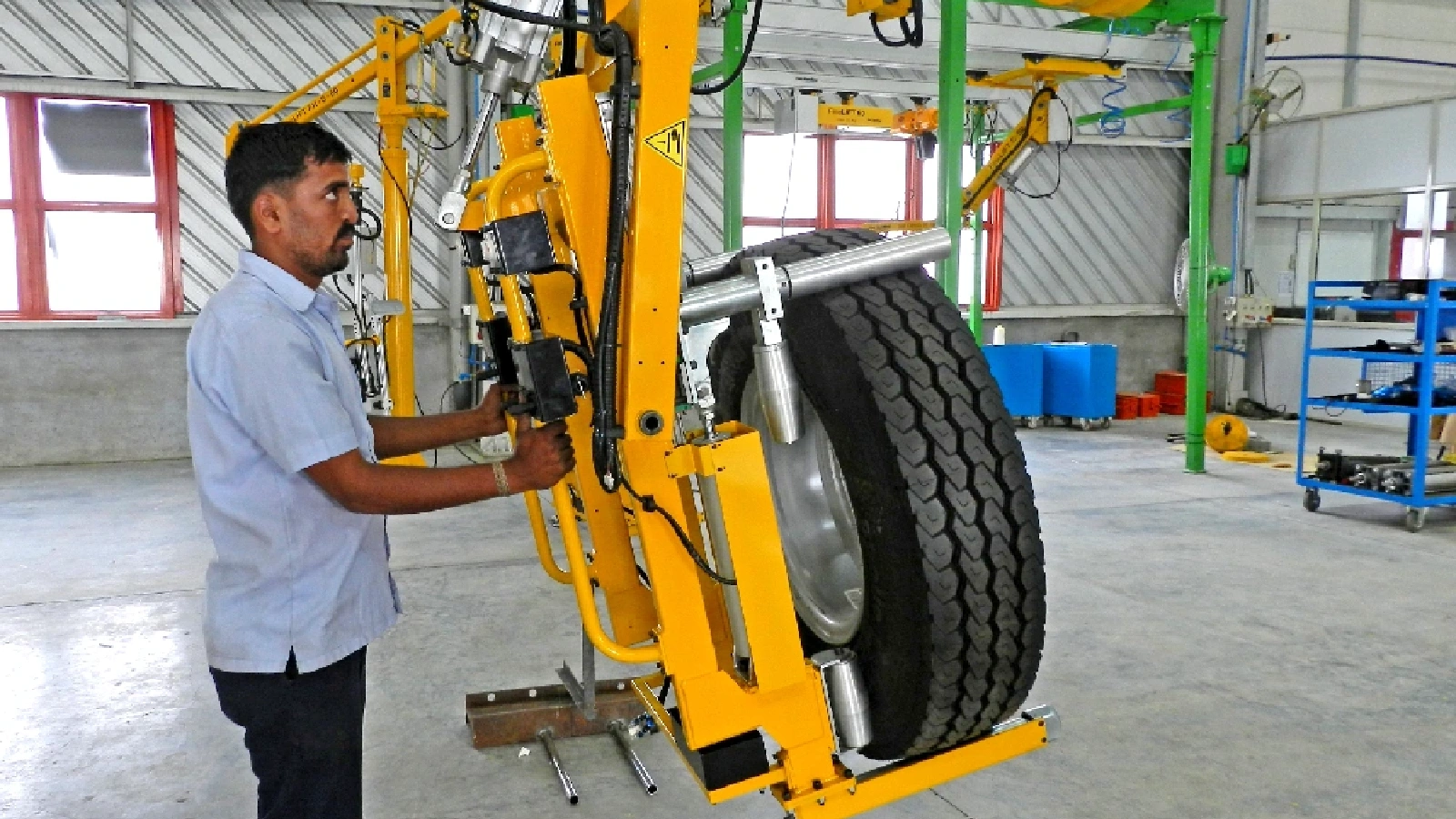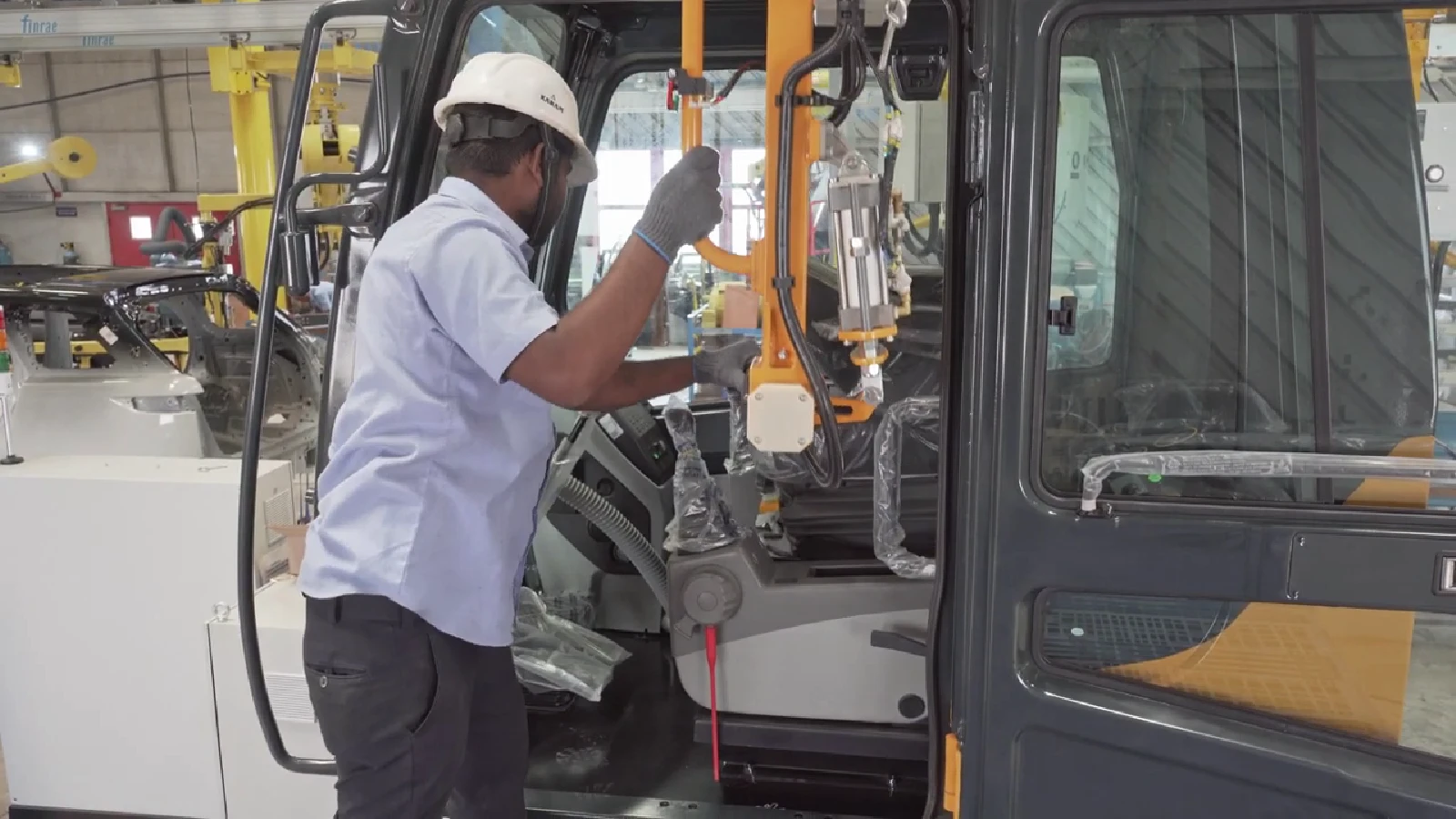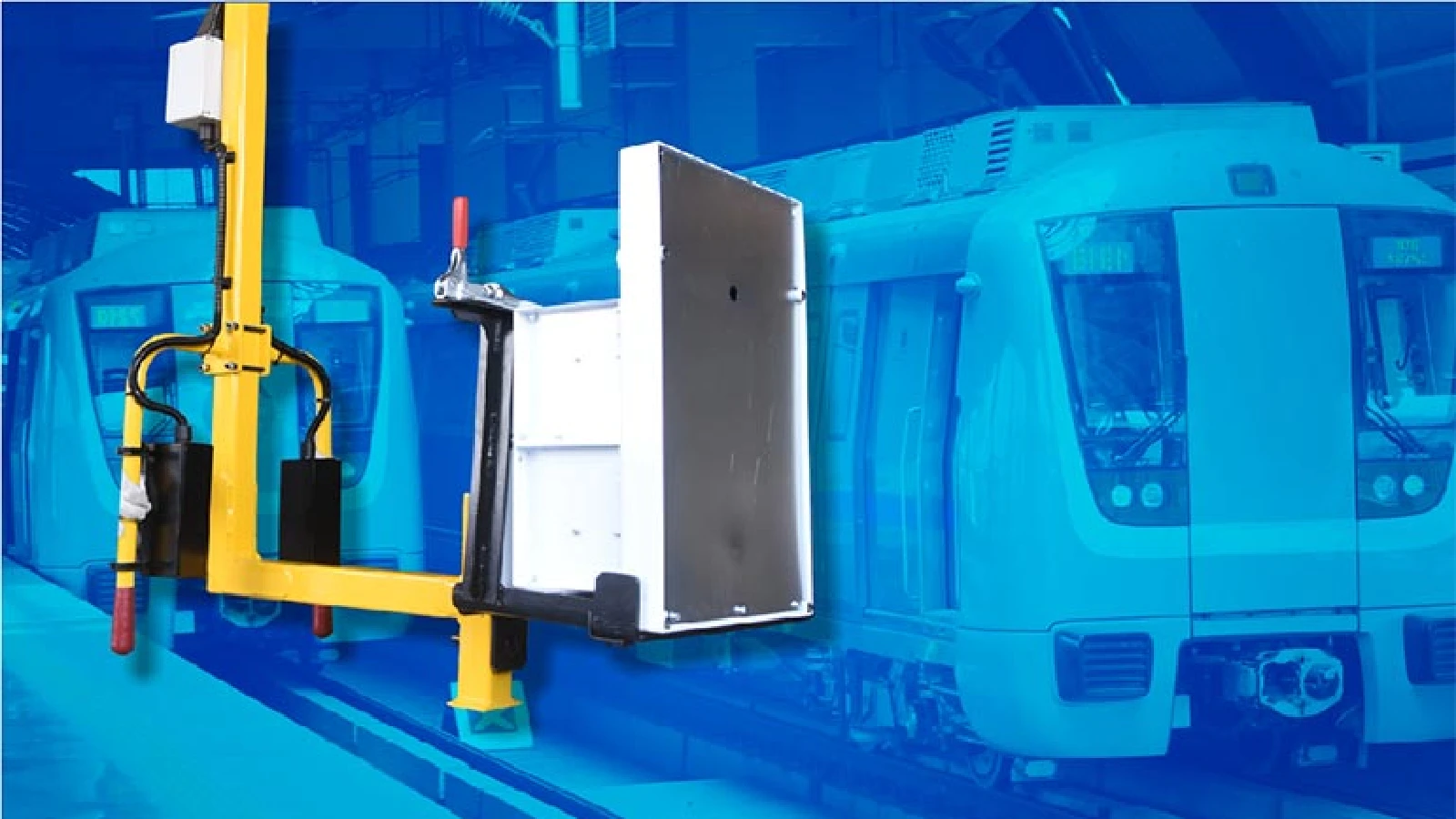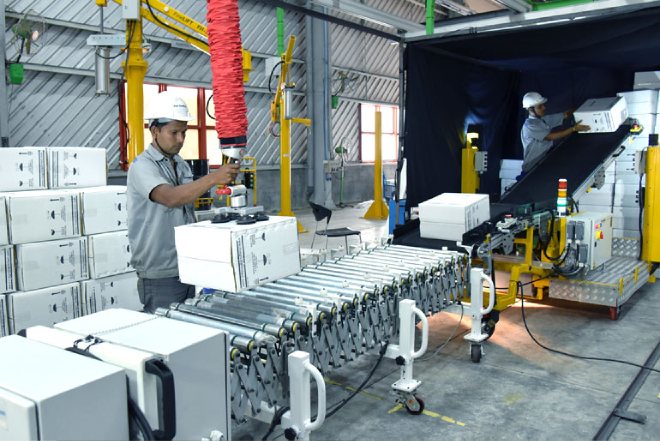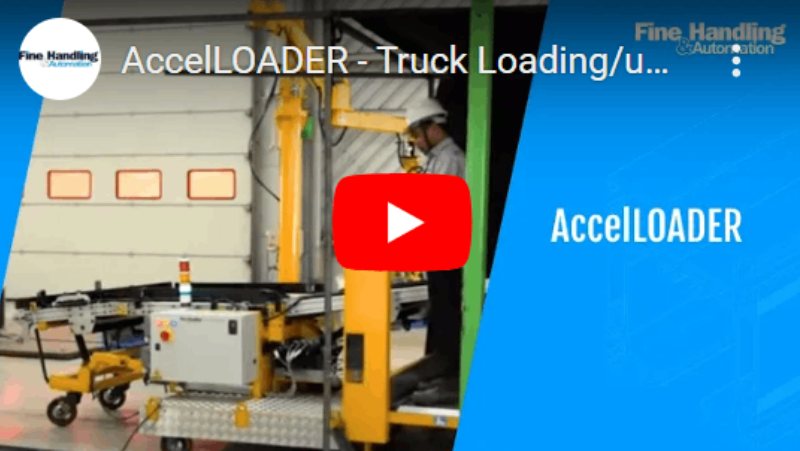Data shows that around one-third of the total accidents at workplace are connected to material handling.
While working conditions such as lack of enough space do have a role in such incidents, around 80% of material handling injuries are caused due to human actions alone.
Material handing activity is part of all departments in a manufacturing firm. It comprises 2/3 of the total manufacturing cycle. Material handling is like a node which connects all the key points in manufacturing process, and a key area of concern for workplace safety
Safety in material handling: a critical concern
Materials of diverse shapes, sizes and weights are handled and moved in a manufacturing firm. Depending on their budgets and application requirements, businesses opt for three different ways to move materials.
- Manual handling: All the lifting and handling is done completely by humans
- Mechanical aid: Using tools such as hoists chains etc. to aid humans in handling materials
Automated solutions: Automatic or semi-automatic solutions such as robots or industrial manipulators.
Wrong handling practices and lack of safety precautions in material handling contribute to 4 out of 5 injuries that occur during material handling.
Major injuries caused during manual material handling
| Injury | Cause | Nature of injury |
| Back injuries | When the person’s lifting techniques are wrong, If the load is too heavy for them to handle. Stooping or twisting, and wrong posture while lifting. |
Injuries to the spine and slipped discs are some of the most common back injuries |
| Musculoskeletal disorders | Repetitive lifting leading to damage, pain or stiffness in the joints or other tissues. | Musculoscalatal disorders include pain in the limbs and many other issues.
Musculoskalatal disorders also affect nerves. |
| Hernia | Repeated strain on the abdoman
Lifting loads that are too heavy to lift |
An internal part of the body pushes through a weak spot in the muscle or surrounding tissue wall.
The risk of hernia is higher as you get older |
| Slip, trip and fall | Many causes connected to workplace conditions as well as human error
During material handling, the hands are not free to shield the fall |
Various injuries |
| Strain and sprain | Handling objects that are too heavy, stretching the muscles beyond their capacity. | Inflammation and main in the muscles, bruising |
| Injuries to hands and feet | Wrong handling and placement of heavy loads Handling loads with a complex and/or hazardous profile Dropping the load from a heigh (on foot) |
Minor injuries or breaking the bones and fractures |
Material handling risk assessment
Manual material handling entails conducting a thorough material handling risk assessment before undertaking the handling operation. The manual material handling checklist for material handling risk assessment focuses on 4 aspects
- Task: Consider the type of movement the handling activity involves-twisting, turning, bending pushing, puling, sudden movement of the load, or possibility of teamwork
- Individual: Take the individual’s capacity into account before carrying out the task; assess the individual for any earlier injuries or disability.
- Load: Take into account the profile and weight of the load. Assess how difficult it is to grip and move the load. Consider the temperature and fragility of the load
- Environment: Work environment is an important factor in material handling risk assessment Consider the space constraints, floor conditions, ensure adequate lighting, ventilation and clear path for the load to travel.
The OSHA Material handling and storage guidelines state that given the potential of manual handling to cause injuries, the workers should identify the methods for eliminating or at least minimizing such accidents. Many manual handling regulations note that the workers should try to avoid hazardous manual handling as far as possible, and look for alternative methods such as automation to avoid manual handling risks.
Wrong handling practices increases potential for injuries in manual material handling
- In case of complex material profile, something as simple as taking a firm grip of the load material can have potential to cause injuries.
- Standing at inadequate distance from the load can put a strain on hands and shoulders
- When turning with the load, employees often twist and turn in unsafe ways.
- Manual handling of materials with complex shape and heavy weight often hampers visibility. Employees cannot see over and around the load, which increases possibility of accidents.
Lack of coordination in material handling teams poses a threat
- When two people of different physical capacity pick up the material, the load may not be evenly distributed. One of the employees ends up taking extra pressure, thus compromising the safety in material handling.
- New employees or persons who are slower than the rest of the team could lack in coordination and thus increase chances of injuries for entire group.
Due to the safety risks involved in material handling, employees often conduct manual material handling at a slow pace. The slowness in material handling ends up slowing down the entire production cycle.
Mechanization: Boosting the speed and safety in material handling
Budget constraints and peculiarities in business requirements still lead many businesses to depend heavily on manual labour for material handling. However, manual processes entail higher safety risks, slower speed, and more downtime resulting from injured employees.
On the other hand, automation or mechanization of the processes can reduce workplace injuries by up to 72%. Automated or semi-automated material handling equipment takes a pro-active approach to workplace safety. While high-end solutions such as robots might seem unsuitable, solutions such as industrial manipulators, air balancers, or customized special tools are the perfect solutions to boost safety and efficiency in manufacturing. Fine Handling is one of India’s leading manufacturer of industrial manipulators. We offer over 500 standard as well as customized solutions to customers across diverse sectors.
How automation boosts safety and efficiency in material handling
Reduced physical stress
Industrial manipulators are designed to reduce stress on the workers’ muscles and enable easier lifting of material that have high weight and complex profile. Ergonomic design is the core characteristic of industrial manipulators at Fine Handling. A well-designed industrial manipulator guarantees safety, reliability and ease in material handling for thousands of cycles in operation without any interruption. As a result, you gain significant savings through optimal utilization of manpower. Learn more about the design considerations in an industrial manipulator from our blog here.
Easy handling of heavy and complex materials
Fine’s industrial manipulators are built to fit any product weight specifications and size dimensions. The C-80 compact modular manipulators pack a capacity to lift up to 80 Kg, and are built to operate in constrained spaces. A standard version of the same equipment is ideal for instances which require a longer reach, and double rotation for easy maneuvering.
Versatility of the our solutions is best demonstrated in the gripper tooling. There are standard gripping attachments for drums, bags, boxes, cartons, reels or rolls. Robust controls, and customized grippers ensure that solution will be uniquely crafted to best fit the duties it is expected to perform, while ergonomic design brings brings a multifold boost to safety in material handling.
Source from India’s leading experts
Backed by 15+ years of experience in designing material handling solutions, the team of experts from Fine Handling works closely with customers to conduct a thorough material handling risk assessment and understand the customer’s business needs. Fine Hand, our dedicated post-sales service arm brings a long-term commitment to boosting the safety and efficiency in material handling at your facility. This program includes providing the required training to employees, addressing customer queries in course of equipment use, and annual maintenance contracts to ensure high-performance from Fine products throughout their service life.
Count on Fine Handling for safe, efficient, and hassle-free material handling solutions.
Get in touch







